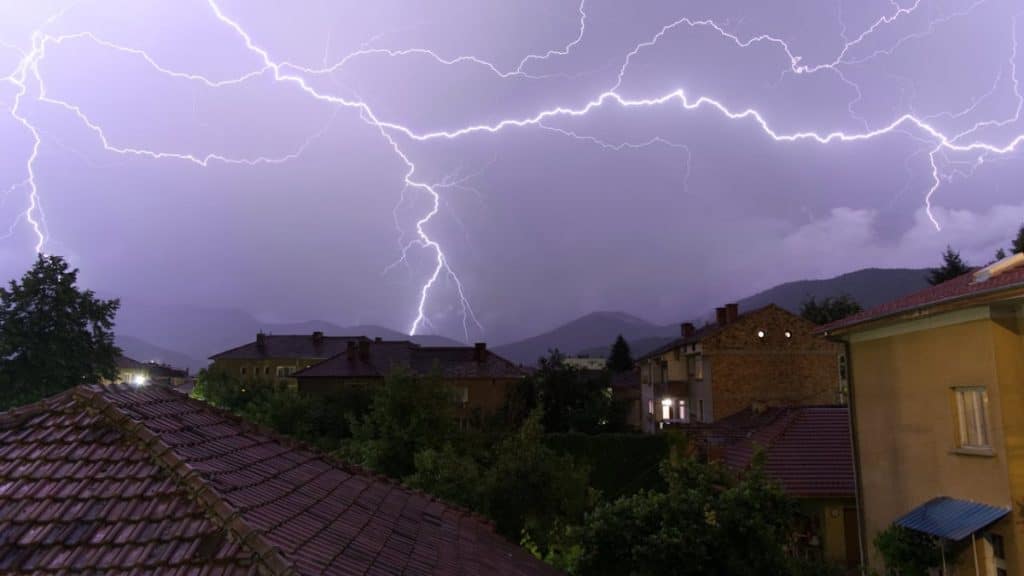Severe weather can strike at any time, leaving homeowners vulnerable to damage that can be costly and stressful to repair. Whether it’s heavy rain, strong winds, hail, or snowstorms, these natural forces can wreak havoc on homes. Taking the right precautions before the next storm hits is key to keeping your home and family safe. Are you prepared to weather the storm?
In this blog, we will share practical tips to help you protect your home from severe weather damage and reduce the impact of future storms.
1. Inspect and Strengthen Your Roof
The roof is one of the most important parts of your home during severe weather. It shields the rest of your house from rain, hail, and wind. Regularly inspecting your roof is crucial. Look for damaged, loose, or missing shingles and have them repaired immediately. Small problems can quickly grow into major issues during a storm.
If your roof is older, consider upgrading to materials designed to withstand severe weather, such as impact-resistant shingles. These materials may cost more upfront but can save you money by preventing storm damage. Keeping gutters and downspouts clear of debris also helps protect your roof by allowing rainwater to flow properly.
2. Secure Professional Assistance for Repairs
Taking care of your roof often requires professional help. For major repairs or restorations, reach out to trusted companies like Storm Warrior Roofing and Restoration. They specialize in fixing storm damage and ensuring your roof is in top condition to handle future storms. A professional inspection can identify hidden issues that might not be obvious to the untrained eye.
Don’t wait until after a storm to fix your roof. Proactively addressing these problems can prevent leaks, water damage, and structural issues. Partnering with experts ensures your home remains secure and minimizes costly repairs in the long run. If you wait too long, the damage could be too severe, and you also risk the lives of your family members.
3. Reinforce Windows and Doors
Windows and doors are weak points during severe weather. High winds and flying debris can easily break glass, causing damage to the interior of your home. Installing storm shutters or impact-resistant windows provides extra protection. These upgrades are especially important if you live in an area prone to hurricanes or strong winds.
Weatherstripping around doors and windows helps seal gaps and prevents water from entering your home. For an additional layer of security, consider installing sturdy door braces or reinforced hardware. These small changes make a big difference in keeping your home safe during extreme weather.
4. Trim Trees and Maintain Your Yard
Overgrown trees and loose yard debris pose serious risks during storms. High winds can turn branches into dangerous projectiles, breaking windows or damaging siding. Regularly trimming trees near your home reduces this risk. Focus on removing dead or overhanging branches that could fall during bad weather.
Keep your yard tidy by securing outdoor furniture, toys, and garden tools. Storing these items in a garage or shed during severe weather keeps them from becoming hazards. A well-maintained yard not only looks nice but also helps protect your home from storm-related damage.
5. Protect Your Home’s Foundation
Heavy rainfall and flooding can cause significant damage to your home’s foundation. Proper drainage around your home is essential. Check that your gutters and downspouts are directing water at least five feet away from the foundation. Adding downspout extenders can help.
Sealing cracks in your foundation and basement walls prevents water from seeping into your home. Installing a sump pump in your basement is another effective way to reduce the risk of flooding. These steps keep your home dry and minimize potential structural issues.
6. Strengthen Your Garage Door
Garage doors are often overlooked but are vulnerable to high winds. A damaged garage door can allow wind and water to enter, causing extensive damage. Reinforcing your garage door with braces or upgrading to a wind-rated model adds valuable protection.
If your garage is attached to your home, a strong door also protects the interior from storm damage. Taking the time to secure this entry point helps shield your entire home from harm during severe weather.
7. Invest in Emergency Supplies
Preparation is just as important as prevention. Keeping emergency supplies on hand ensures you’re ready for the unexpected. Stock up on essentials like flashlights, batteries, non-perishable food, and bottled water. A weather radio can keep you informed during power outages.
If severe weather is forecast, having a plan in place for your family is crucial. Designate a safe area in your home, such as a basement or interior room, where everyone can shelter during a storm. Emergency preparedness adds peace of mind and can save lives.
8. Stay Informed and Take Action Early
Knowing when severe weather is coming allows you to act quickly. Stay updated by following local weather forecasts and signing up for emergency alerts. Early warnings give you time to secure your home and prepare your family.
Don’t wait until the last minute to take precautions. By staying proactive, you can reduce the impact of severe weather and protect what matters most. Small actions, like checking your roof or trimming trees, make a big difference when it comes to safeguarding your home.
In conclusion,protecting your home from severe weather doesn’t have to be overwhelming. Simple steps like maintaining your roof, securing windows, and keeping your yard clear can go a long way in preventing damage. Working with professionals like Storm Warrior Roofing and Restoration ensures your home is ready for whatever nature throws your way. By taking proactive measures and staying informed, you can protect your property and keep your family safe during severe weather. Start preparing today to build a safer, more resilient home for the future.
